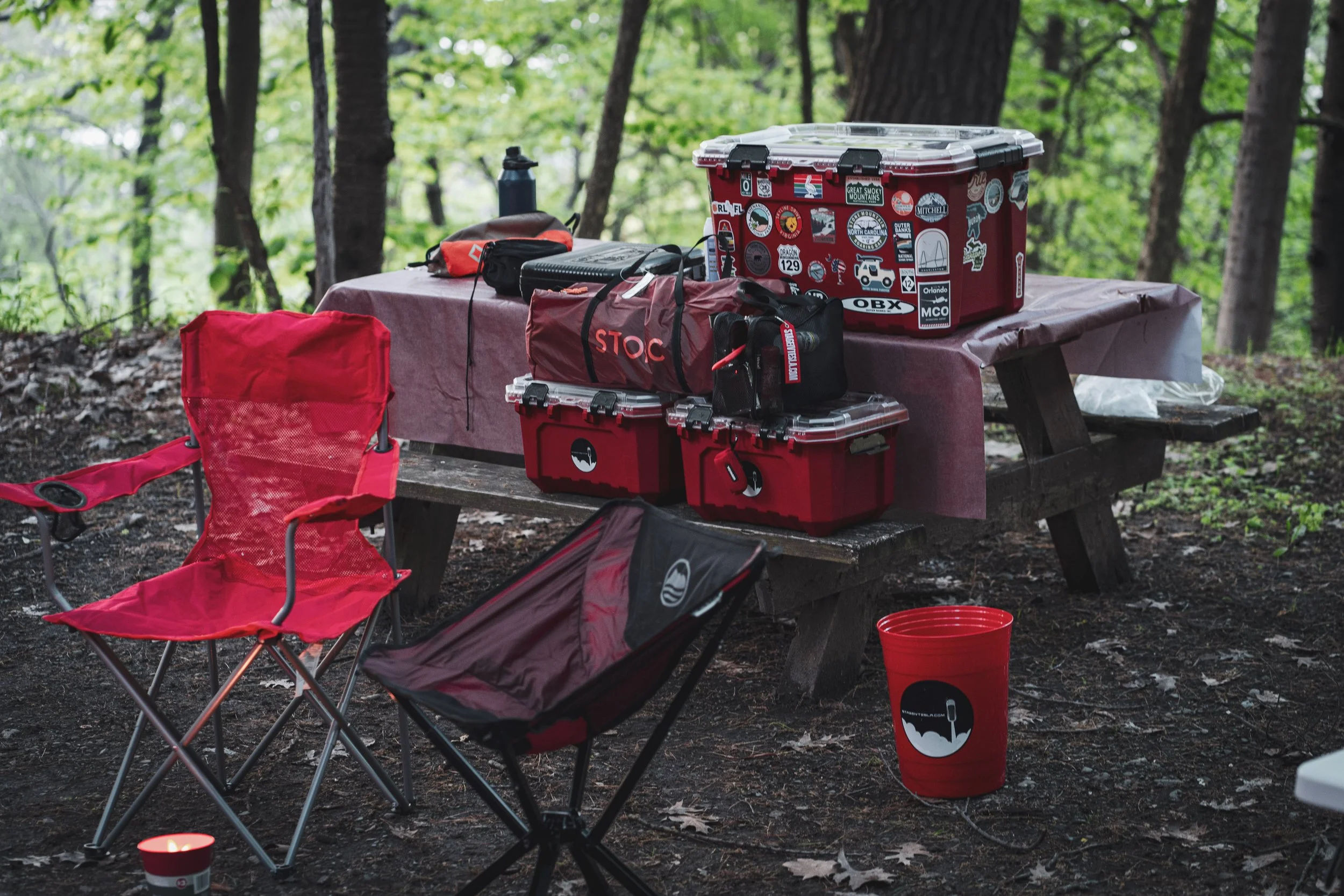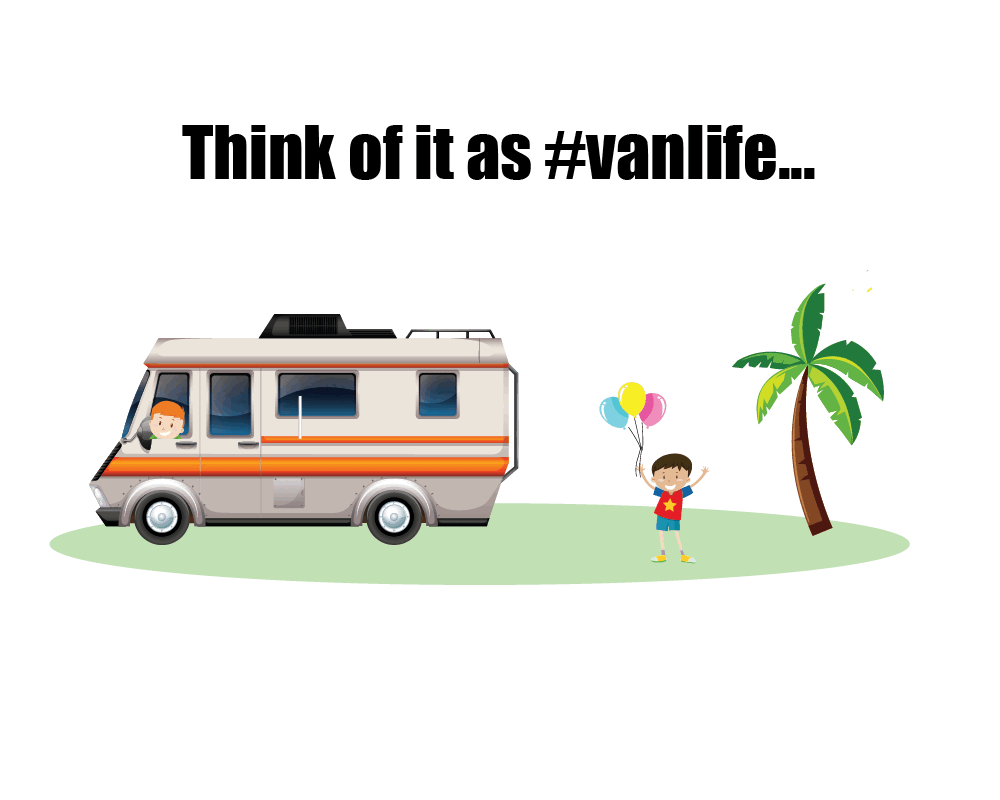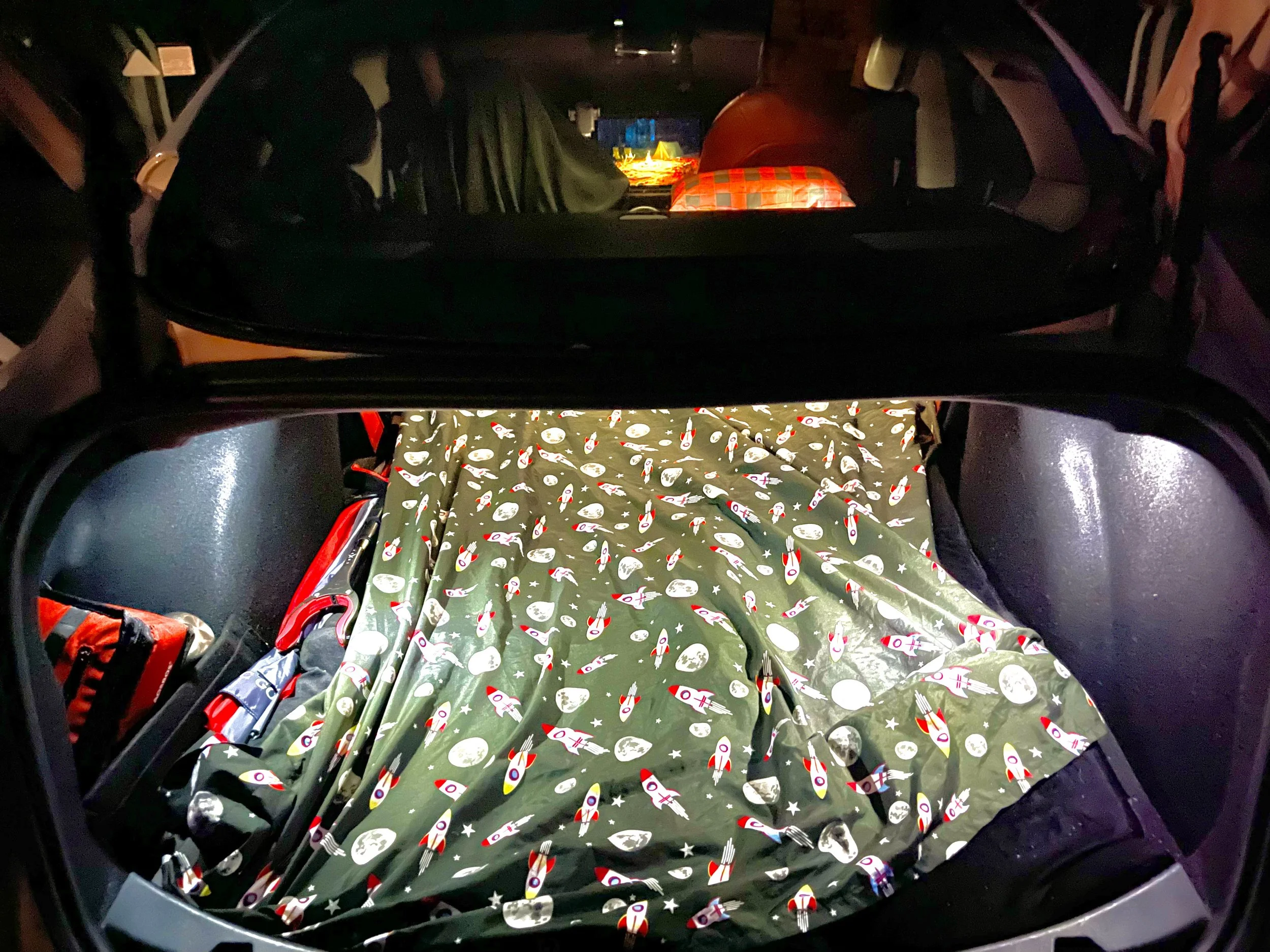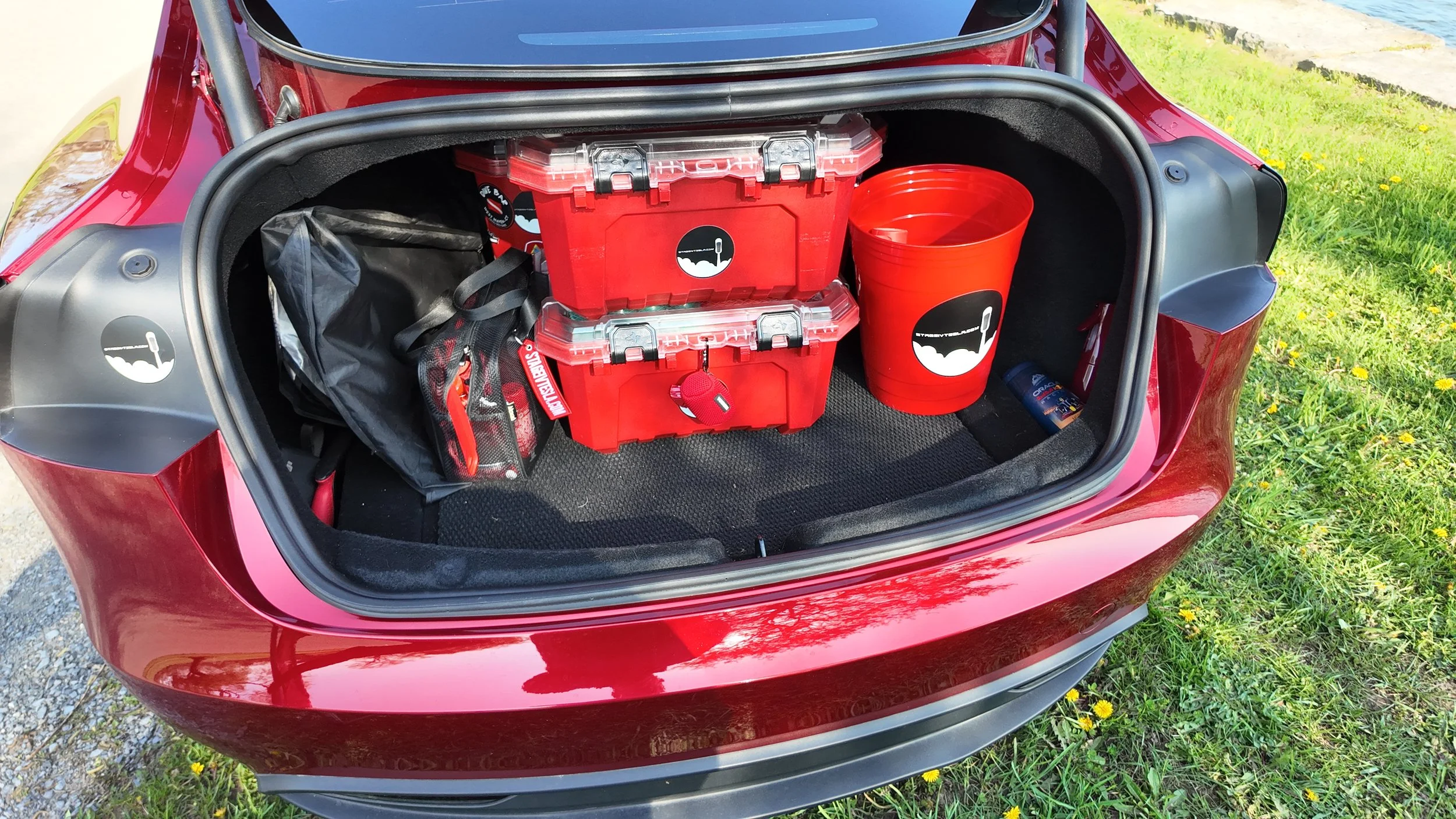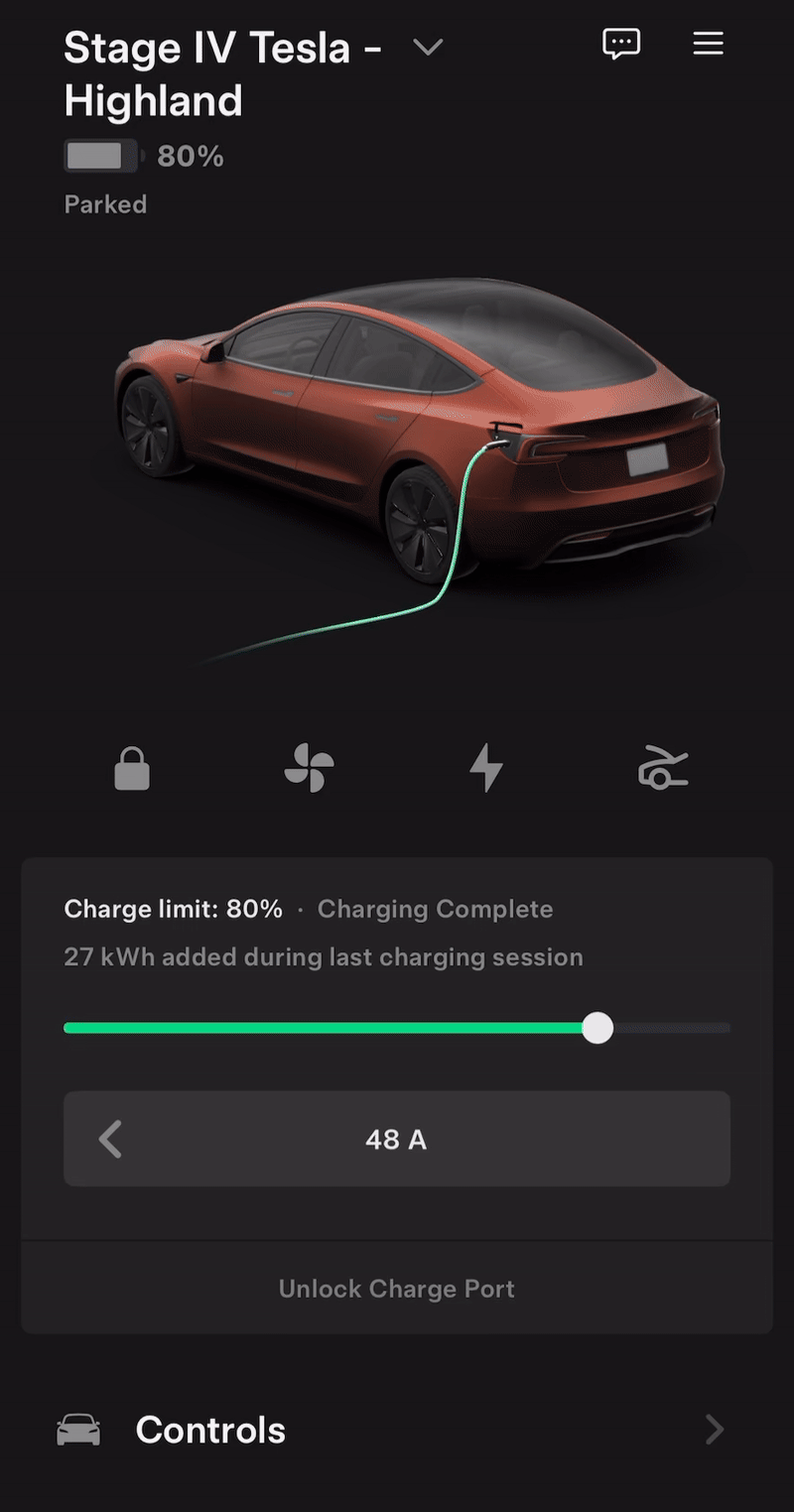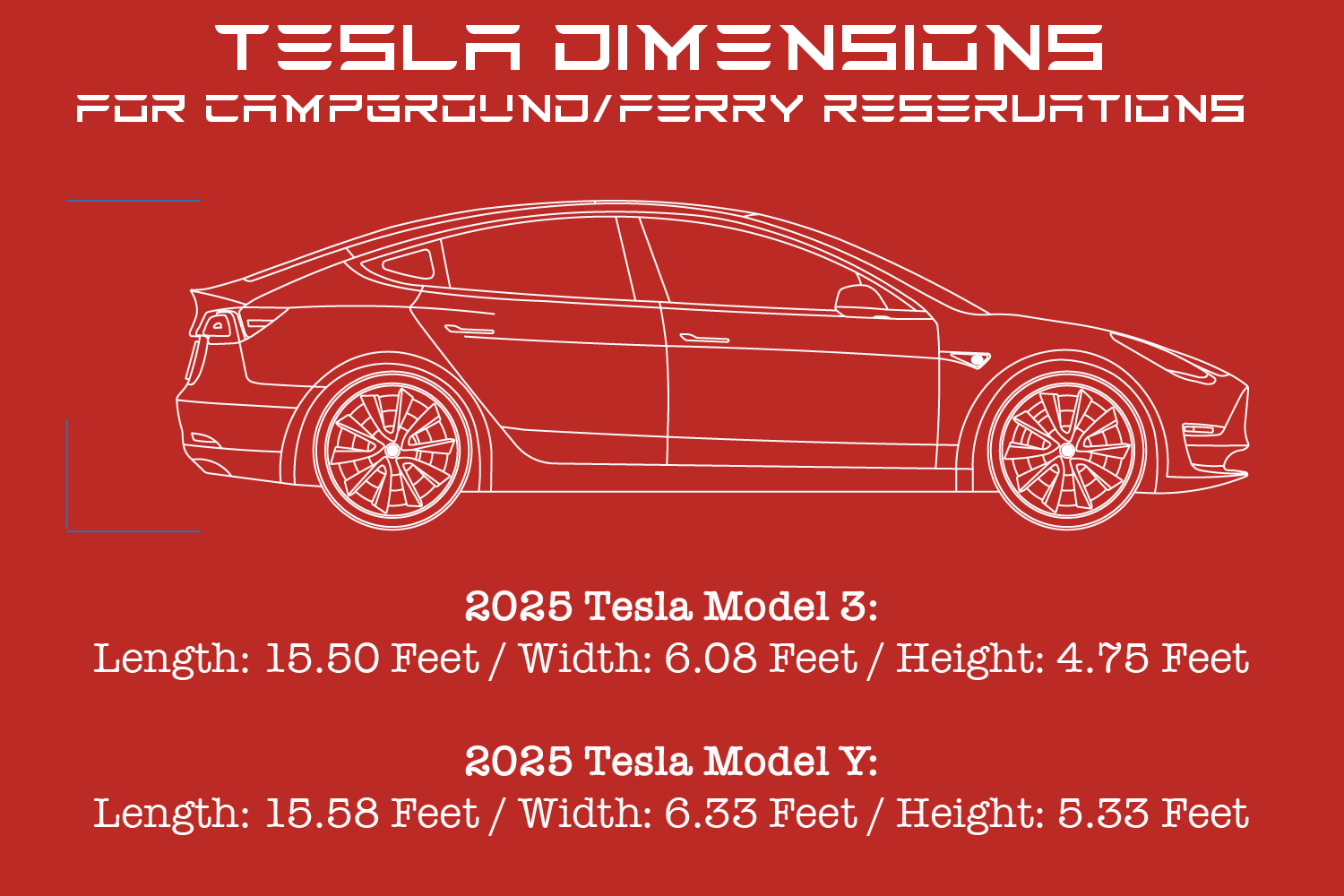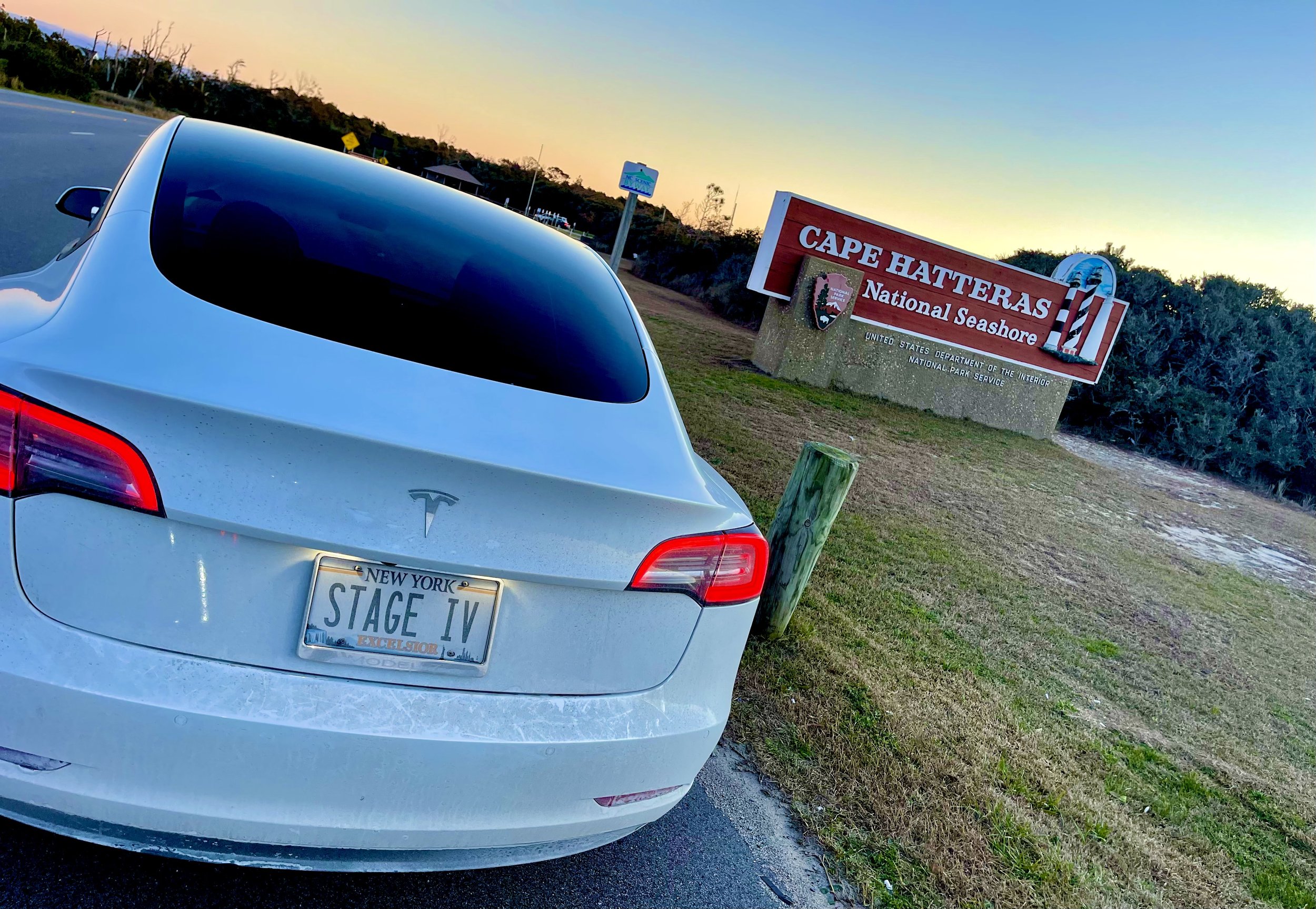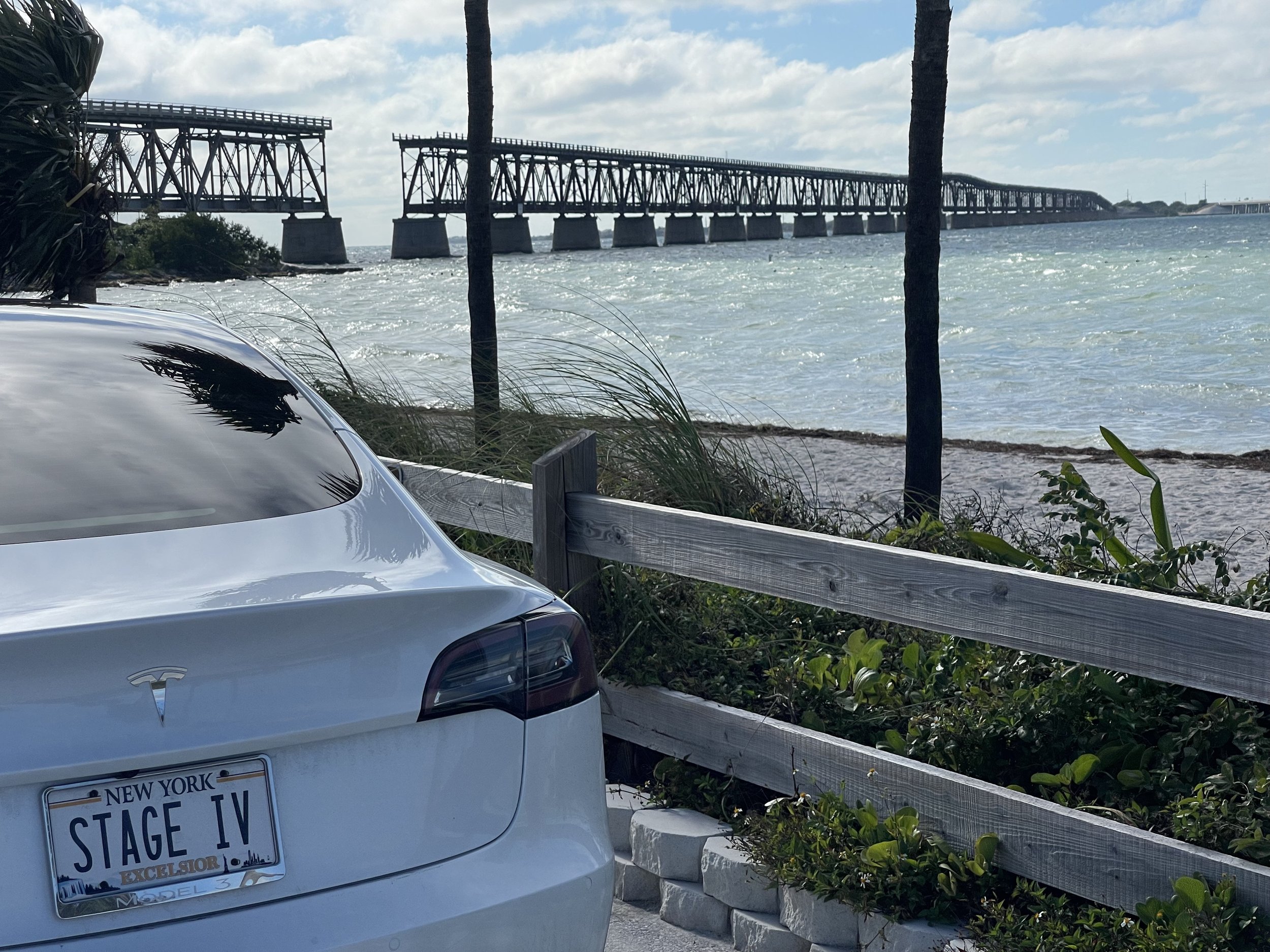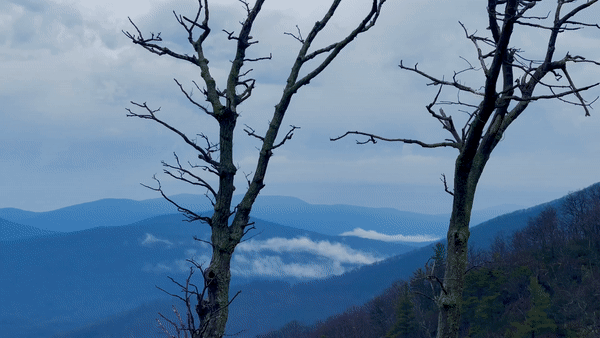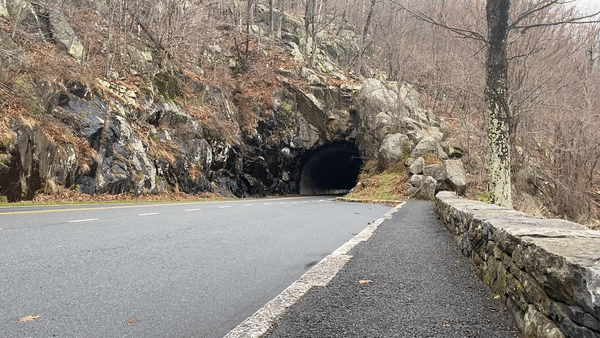
EV Road Trip Basics

Tips to electrify your road trip!
-
THE CHECKLIST
Planning an EV road trip or TeslaCamping journey? Below you’ll find a checklist I compiled from my time on the road…
-
CHARGING TIPS
Have range anxiety? If you’re worried about how you’ll charge along the way, scroll for some tips…
-
SUGGESTED ROUTES
Want to take a trip but don’t know where to start? Below are a few suggestions based on my experiences…
〰️ Ohm on the Range
〰️ Amped Adventure
〰️ Wattage Wanderlust
〰️ Electron Odyssey
〰️ Recharge Run
〰️ Gigawatt Getaway
〰️ Current Quest
〰️ Ohm on the Range 〰️ Amped Adventure 〰️ Wattage Wanderlust 〰️ Electron Odyssey 〰️ Recharge Run 〰️ Gigawatt Getaway 〰️ Current Quest

WHY GO ELECTRIC?
Electric vehicles have been on the rise for more than a decade, both in terms of sales and consumer interest. This growth is driven by factors like increasing environmental awareness, government incentives, and advancements in EV technology. Leading the charge? Tesla Motors, with its vehicles sporty look, monster torque and acceleration, direct-to-consumer sales model, and - perhaps most importantly where growth is concerned - expansive fast charging network.
The global market share held by EVs more than doubled between 2020 and 2021. In 2023 Tesla delivered 1.81 million vehicles globally, a 38% increase from 2022. The addition of more affordable options like the Tesla Model 3 and Model Y - the top-two selling EV models in the US four years in a row - made adoption of the EV lifestyle even more appealing to the masses. As traditional vehicle manufacturers race to introduce their own electrified lineups and decrease production of ICE - internal combustion engine - vehicles, the trend toward electric appears poised to continue.
Meanwhile, you’ve almost certainly heard of #vanlife. Spurred on by travel bloggers showing the world how simple, and beautiful, travel can be, road trips gained an entirely new level of prestige in the months during the pandemic. Feeling an urgent need to get out and do something after being quarantined for so long, people began traveling like never before - RV sales records were set, broken, and set again in 2021. Blogs, Instagram accounts, and TikTok channels featuring magnificent views from the inside of vans swept the internet…
Why #vanlife? Travelers wanted a way to camp that was both inexpensive and - well, safe. Avoiding the pandemic meant continuing to social distance, even out on the road. For some travelers that meant adopting entirely new travel habits: avoiding flying… forgoing hotels in favor of sleeping in vehicles… and even taking solo trips, instead of the group travel they may have been fond of in the past.
Whether in a vintage 1970s-era Volkswagon campervan or a custom-conversion vehicle with the latest in solar and other technology, it’s safe to say that many people discovered an entirely new method of travel - and, for some, a whole new way of life, during the pandemic years.
Electric vehicles made up a very small part of this revolution at first. The trepidation of ‘range anxiety’ - fears that the battery will run out of power before a suitable charging point is reached - likely kept many would-be voltage adventurers at bay. Even seasoned Tesla owners in those early years would often remark that they held on to a gasoline-powered vehicle “for road trips.” The idea of driving any real distance away from home in an EV just seemed… scary.
As Tesla continued to expand its supercharging network, however, those fears decreased. (As of January 2025, Tesla operates a network of over 7,000 Supercharger stations with over 65,800 connectors - and in 2023 the company began opening their network up to vehicles manufactured by competitors, as well). With personalities from the Tesla community embarking on road trips shared on social and traditional media, and some of us camping - “Teslacamping” - along the way, online groups around this new type of travel began to form.
EV road trips, and EV camping, was beginning to go mainstream…
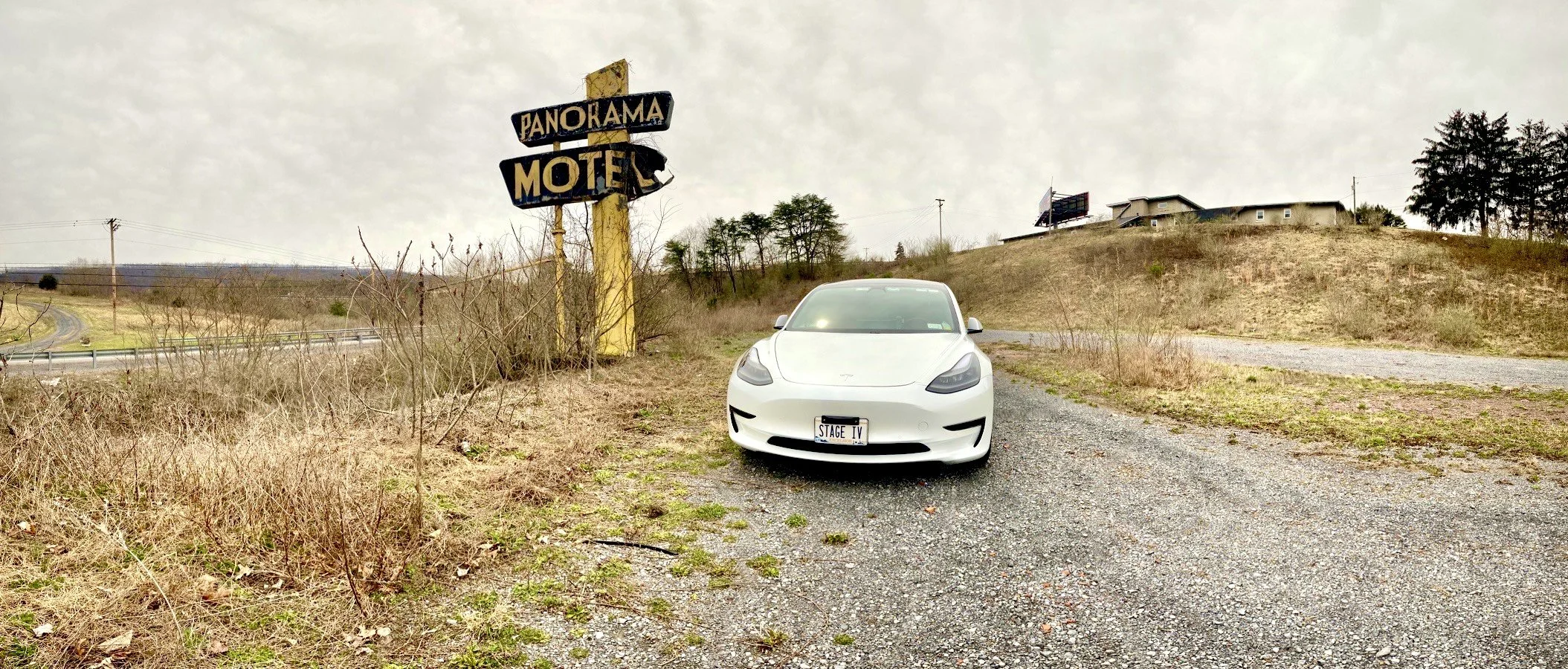
No Hotel Necessary…
SO MANY DIFFERENT WAYS TO STAY
The best part of road tripping in an electric vehicle is the flexibility it gives when it comes to overnight accommodations.
Drivers on an EV road trip can choose to spend the night in a hotel or motel… or to rent a cabin… or perhaps pack a tent and do some camping… or maybe even eschew all of those options and simply spend the night in their electric vehicle itself, at a campground or, really, just about anywhere.
Lodging. For some electric vehicle road trippers, their Tesla is just for getting there - they don’t want to pack a tent or sleep in their car, instead choosing more luxurious accommodations along the way. Hotels and motels that offer EV charging hookups, including Tesla Destination Chargers, are becoming easier to find; websites like AirBnB and VRBO even offer the option to filter properties by features including EV hookups.
Camping. Whether you are stowing a tent, renting a cabin, or towing a trailer - both the Tesla Model Y and X are rated for towing - there are a wide variety of campgrounds to suit an EV road tripper’s needs. Some of the nationwide franchisees like KOA have even begun adding EV chargers at their properties, recognizing the potential these vehicles hold for their business model.
Boondocking. Boondocking, or ‘dispersed camping’, is off-grid camping - reliant entirely on your own resources (water, power, etc.) without access to the amenities of a traditional campground. Boondockers typically set up camp on remote, undeveloped areas, including public lands (national forests, BLM land). Boondocking is typically more common in RVs, since it requires campers to provide their own water, sewer, and electric. There are some Tesla campers out there with amazing setups perfect for this style of camping, including potable water systems, portable toilets, and solar-powered battery banks. Whereas most EV road trippers would probably get ‘range anxiety’ from just the thought of going ‘off-grid’, there are some brave Tesla owners among us who are doing just that.
TeslaCamping. For those who prefer to sleep in their vehicle over sleeping in a tent, there’s also Teslacamping - my favorite way to travel. I love sleeping in my Tesla. Rather than just hit the road and sleeping whether my travels take me, I try to book a campsite in advance - I find this to be a safer and more secure option than sleeping in places like rest areas or store parking lots. (Read why here). An added bonus: many campgrounds have bathroom, shower, and even laundry facilities, making for a much more comfortable trip. When you consider the fact that campsites can be as low as $27/night, and many offer 30-amp or 50-amp charging - saving you $15-25 on a Supercharge - you can subsidize your stay with a charge and wind up practically breaking even!

What Is TeslaCamping?
WHAT IS TESLACAMPING?
What is Tesla Camping?
Think of #vanlife - without the van.
As EVs have exploded in popularity, so have ‘EV road trips’ - Tesla travelers are pushing the limits of travel, getting as far as they can on a charge and sleeping in their vehicle instead of finding a hotel or motel along the route.
Some campgrounds discourage EV camping, dismissing it as the same thing as car camping. (‘Car camping’ is just what it sounds like - sleeping in a car, truck cab, or mini-van, often on a road trip). While traditional ‘car camping’ can be done safely with the use of heaters or fans to help with climate control and air circulation, some have ruined it for the rest - rules intended to prevent noisy engines running all night, vehicle exhaust, and the possibility of carbon monoxide poisoning have long been in place at many campgrounds.
EV camping is NOT the same as car camping. The lack of a traditional internal combustion engine in an electric vehicle means there is no exhaust, and no carbon monoxide - and, thus, no risk of pollution or CO2 poisoning.
And EVs like the Tesla Model 3/Y have a feature called ‘camp mode’ that keeps their climate control operating all night long without disturbing the peace and quiet. ‘Camp mode’ keeps my car running at whatever temperature I set it to, with enough power left over to charge my phone, power my CPAP, and watch a movie on the theatre display.
In January 2022 I embarked on a 5,000 mile road trip, traveling from my home in upstate New York to the Florida Keys and back. I spent the night in ten different campgrounds across five states, and loved every minute of it. I like to say my Tesla Model 3 is a zero-emissions, climate-controlled sleeping pod on wheels. I woke up one morning after sleeping on Cape Hatteras National Seashore, stepped out of my vehicle, and looked down to see traces of gasoline and motor oil where I was standing. Do you know whose vehicle doesn’t leak engine fluids onto the beach? That would be my Model 3… Who knows how many RVs had spurted oil onto that beach before I came through?
Clean, cheap travel is coming. It will be spurred on by the increased adoption of electric vehicles, as well as a continued desire to travel cheaply and cleanly. Here’s hoping more campgrounds come on board with it in the very near future…
When people ask me what makes TeslaCamping so unique, I hit ‘em with the bullet points below:
ZERO EMISSIONS
No internal combustion engine means no CO2, ever, in an electric vehicle. There is no exhaust. No engine noise. No engine rumble. No pollution. No risk of carbon monoxide poisoning. None of the thing you’ll find with a traditional vehicle, or most RVs.
‘CAMP MODE’ MEANS NO TENT NECESSARY!
A Tesla-exclusive feature called ‘Camp Mode’ means climate control keeps the car at a comfortable temperature no matter the weather. In Virginia I experienced temperatures as low as 17 degrees, but I was warm and toasty all night long in my Tesla! I’ve cooled off when temps have been in the 90s, as well. (Some EV campers do choose to add an SUV-style tent to increase their space and keep the tented area heated and/or cooled).
ALL-GLASS ROOF
Imagine sleeping under the stars inside the comfort of your vehicle? I saw a meteor shoot across the sky in the Florida Keys. Try doing that from inside a tent… [Find a ‘Dark Sky’ location near you - click here]. [Meteor showers of 2025 - when and where].
INFOTAINMENT SYSTEM
Want to Netflix and chill? You can do that in your Tesla! I watched ‘Outer Banks’ in the Outer Banks. Tesla vehicles come equipped with Netflix, Hulu, Disney+, TikTok, Twitch, and more. It’s got Spotify and other streaming music apps, as well. It even has a web browser - the entertainment possibilities are literally endless. Rainy day? No problem… you’ll never get bored on an EV road trip with all of the options. Newer versions of the Model 3 (2024+) and Y (2025+) even have a small screen in the backseat.
30 & 50 AMP CHARGING
Most models of Tesla (S/3/X/Y) are capable of charging overnight with 50-amp service. And 30-amp service will top up the car, as well. Keep scrolling for more information on adapters to use at your campsite.
No electric at your campground? No problem! Camp Mode averages just 2-3 miles of range per hour - there’s likely to be plenty left to spare, so even those sleeping in the most primitive of campground sites will typically wake up and be able to drive on out of there…
ACCESSORIES!
So many products exist that make your #EVroadtrip even more electrifying!
Tesla-specific mattresses add to your comfort while sleeping in the car.
Add an attached tent made for Teslas, or an SUV tent, for even more climate-controlled space and room for guests.
Coolers designed to fit in the vehicle’s ‘trunk’ or ‘sub-trunk’ make it possible to bring food and drinks with you and keep them cold.
There’s virtually no limit to the products that are being designed to make #TeslaCamping and #EVCamping better and better. EV camping truly is the future of road trips!

EV Camping Checklist
THE CHECKLIST
Planning an EV road trip can seem daunting, especially one that is self-sustaining involving overnight stays at campgrounds along the way. I have put together a checklist of items. You may find helpful to have on hand as you embark on your own EV road tripping journey. Many of these are things I discovered through my own travels, and some are suggestions from others in the TeslaCamping community.
CAMPING
Tent/SUV Tent
TesMat™ Mattress - or similar
Bedding
Blanket
Camp Rug/Welcome Mat
Camping Chairs
Camping Table*
Lanterns
Headlamps*
Yeti Rambler Drinkware - Hot/Cold
Side Window Privacy Shades
Hammock*
OFF-GRID CAMPING?
Pop-Up Toilet/Changing Tent*
ELECTRONICS
Charge Cables - USB-C, USB-A, 12V
Portable Power Station*
Foldable Solar Panel
Portable Battery
MISCELLANEOUS
Camping Knife
Mallet/Hammer
Multitool or Tool Kit
Bungee Cords
Duct Tape
First Aid Kit
Repair Kits
Sunscreen
Insect Repellant
Lip Balm
Umbrella
Mirror - For Rescue
Flares - For Rescue
Firewood* - Source Locally
CHARGING
Tesla Mobile Connector
TT-30 Adapter
Nema 14-50 Adapter
J-1772 Adapter*
CCS1/Chademo Adapters*
Bungee Cords/Duct Tape
KITCHEN
Frunk or Subtrunk Cooler*
Camp Stove/Fuel*
Nesting Cookware*
Cooking Utensils*
Wine/Bottle Opener Tool
Dishware/Drinkware
Utensils
Sharp Knife
Cutting Board*
Sponge/Scrubby*
Lighter/Fluid
Tablecloth
Resealable Bags
Tinfoil
Paper Towels
Trash Bags
Charcoal*
If stocking up on all of the items on this list seems overwhelming, keep in mind that some EV road trippers leave home with almost none of these things, and still make it work. Stock just the items that are available to you and start with an overnight in a local campground or a shorter trip - a ‘shakedown’ EV cruise, if you will. Over time you’ll figure out which items you need, which just make the trip easier, and which you can live without.
There are online EV camping and EV road trip communities on Facebook and Reddit with no shortage of folks willing to share their own tips and give advice. Join them, and ask questions! And once you’ve got a trip or two under your belt, come back to them and share your tips with others.

Camping & Roadtrip Tips
ROAD TRIP TIPS
A true EV road trip often involves a number of overnight stays in different campgrounds, and other locations, along the road.
That means night after night of setting up camp, and tearing it down hours later to get back on the road.
Sometimes you arrive at your campsite in less-than-optimal conditions: after dark… in the pouring rain… in snow. Being able to get things set up quickly, with as few steps as possible, can be paramount.
I discovered early on the benefits of storage containers to keep all of the various items needed for my road trips as organized as possible.
Just a day or two into my first road trip I discovered the need for said storage containers to be watertight.
Weatherproof.
And, eventually, I came to realize that they should be raccoon proof, if at possible. (I’m not even kidding).
I also discovered that a storage container in the trunk of my Model 3, with its instant acceleration and massive amounts of torque, tended to slide around the trunk and bang on all four sides.
Bang! Bang! Bang!
Nothing interferes with the peace of a drive than constant banging noises coming from the rear of the vehicle every time you accelerate, brake, or take a turn at any level of speed.
Eventually, I discovered what I think is the perfect solution: watertight, weatherproof and raccoon-resistant storage boxes from Husky, sold by Home Depot.
I use three such ‘travel boxes’ in the trunk of my Model 3 for the perfect fit: a 20-gallon box, and two 5-gallon boxes, squeezed right in.
The 20 gallon Husky fits just about everything I need for my campsite:
Bedding/Pillow
Cliq Camping Chair
Camp Stove/Fuel
Lanterns/Headlamp
Citronella Candles
First Aid Kit
The two smaller 5-gallon Huskies have varied in their use through my years of road tripping.
In 2022 one contained nothing but COVID tests, KN95 masks, hand sanitizer, and other COVID-related health supplies. Remember those days of social distancing on the road? Fun!
Currently it contains items that I use daily, like dog treats and dog poop bags.
The second Husky is where I stow my electronics: my 30-amp and 50-amp car charging adapters, as well as camera equipment. (I like keeping this stuff in a hardshell case in a second hardshell case, so the 5-gallon Husky boxes work perfectly.)
In the trunk of my Model 3, the 20-gallon box gets inserted first, and the two 5-gallon boxes stack on top of each other, filling out the trunk space to hold all three boxes perfectly in place as I drive.
The height of the boxes is perfectly suited for the Model 3. They fit (with very little movement) in my 2021 SR+, and now fit like a glove in my 2025 LR, squeezing perfectly between the base of the two subwoofers up above. It’s almost like this car was designed around them!
Being wedged in prevents them from moving much, and I’ve developed a system for squeezing other items in around them: my computer bag and camera tripods slide in to the right, or my tent when I take it on road trips. My hygiene bag and an assortment of other items fit in to the left: window blackout covers, windshield cover, snow brush, umbrella, etc. Sometimes I throw in a garbage pail, other times a cooler - it all depends on what I need on a particular road trip or Teslacamping weekend.
When I arrive at a campsite in a downpour I can quickly move all three boxes to a nearby picnic table, and presto! - my trunk is practically empty. My contents remain dry in their storage boxes, and I’m back in my car in a matter of a minute or two.
Imagine if, instead of this system, I had every single item in these boxes stored separately and had to painstakingly move them, one by one? It would be confusing, my items would wind up wet, and I’d be scrambling in the dark trying to light up my entire campsite to find an item. (That better describes my first road trip. You learn from your mistakes. This system is one that I came up with after a few frustrating nights on the road).
If you are blessed with the additional space that the Model Y provides, my system may not be the perfect one for you - you may be able to fit bigger storage boxes, or more of them. You’ll probably be able to fit many, many more items in your trunk, as well.
You may drive a Model 3 or Model S and have your own solution. (Feel free to share it with me!)
If you’re looking to embark on your first road trip in a Tesla Model 3, though, and you plan to do lots of overnights along the way, consider my system as one possible way to make your trip easier, less time-consuming, and less noisy. If you use it and find it works for you, let me know!
In addition to the Husky storage boxes in the trunk, I have several storage boxes in my back seat that come along with me for most of my road trips.
For these I use collapsible grocery bags - think boxes that fold flat when you’re not using them.
[GIF]
I pack like this because I like to have extra space in my car if/when possible, and I like the flexibility that being able to fold and stow these boxes if/when necessary provides.
I also like that they have handles - they’re meant for carrying groceries, after all - and they’re easy to move from car to picnic table, or from back seat to floor.
I typically start each trip with four or five boxes:
Groceries and food supplies
Clothing
Bottled water and beverages
Trash - I line it with a small trash bag
Miscellaneous - my CPAP, mobile charger, medication, etc.
Five boxes fit across the back seat perfectly when I’m driving.
They do fill the back seat from door to door, making it impossible for passengers to sit there. I’ve removed them and left them in my campsite a few times - in my tent or under a tarp in case it rains. Usually, though, my trips are solo ones and the back seat isn’t needed for passengers. (I’ve met road trippers who embark on their journey with the back seat completely removed from the car, for more comfortable sleeping… at least I could take on back-seat passengers if I remove these boxes, right? To each their own).
At night, the front seats must be moved forward so that the rear seatback can be folded down - this is what turns the Model 3 trunk+rear seat into a bed. Once the two front seats are in the all-the-way-forward position there is room on the floor behind them for four of my foldable storage boxes. I place them along the floor, side by side, and as I lay down to sleep comfortably in my bed everything I could possibly need is right by my head: snacks in one, extra socks in another, etc. etc.
I should note that I am careful to put the bin designated for trash farthest toward whichever door I use to enter and exit the vehicle. The last thing I do after pulling my feet in at night is remove my footwear and place them across the top of the box designated for trash. Dirty shoes? Beach sand? I do my best to avoid getting it on the floor, or in the bed, and let it fall into the trash container where it belongs. (I learned this trick after I left my shoes on the ground next to the car overnight and it rained unexpectedly - I woke up to soaked shoes!)
Maybe you travel lighter than I do.
Perhaps you wear the same couple of outfits every day on your trips, or just do laundry more often?
Maybe you eat at restaurants, and don’t prepare food at your campsite?
Hopefully you travel with less medication than I do.
Some roadtrippers will be able to get their need for backseat storage down from five boxes to three, or two, or one, or even none.
(How I envy you minimalist travelers!)
My system requires four or five for everything I like to bring with me, and I’ve done this enough to know what fits and what makes the trip as efficient as possible.
Sure, my campsite may look like a cluttered mess, at times…
…but the system here works for me.
I hope you’ll find one that works equally well for you.

‘Camp Mode’ Basics
‘CAMP MODE’ BASICS
ACTIVATING ‘CAMP MODE’
Ensure the vehicle is in Park with at least 20% battery charge. On the touchscreen, tap the temperature/fan icon and select “Camp.” Alternatively, use the Tesla mobile app by navigating to the Climate section, swiping up, and selecting “Camp.”
FEATURES OF ‘CAMP MODE’
Climate Control: Maintains your preferred cabin temperature and airflow, preventing fogged windows and ensuring fresh air. You can adjust the temperature via the touchscreen or app.
Touchscreen Access: The touchscreen stays on, allowing you to play music, browse the internet, use the arcade, or watch shows on Tesla Theater (requires Wi-Fi or Premium Connectivity for streaming).
Power Supply: Keeps USB ports and 12V outlets powered for charging devices like phones, laptops, or small appliances.
Interior Lighting: Maintains customizable lighting for comfort, though you can turn off overhead lights manually to save power or reduce glare.
Easter Egg: After 10 minutes of inactivity, the touchscreen may display a cozy campfire animation, enhancing the camping vibe.
‘CAMP MODE’ POWER CONSUMPTION
Battery Usage: Consumes about 1% of battery per hour, roughly 10% over an 8-hour night under normal conditions. In extreme cold or heat, it may use up to 15% or more. Camp Mode automatically disables if the battery drops below 20% to ensure enough charge to reach a charging station.
‘CAMP MODE’ LIMITATIONS
Security: Sentry Mode and auto-locking are disabled, so you must manually lock the doors via the touchscreen or app before sleeping.
Restart Required: Opening doors may deactivate Camp Mode, requiring you to restart it.
Battery Caution: Avoid using Camp Mode in remote areas without charging access unless you have sufficient battery reserves. Charging while in Camp Mode is possible, preferably with a Level 2 charger for efficiency.
TIPS
Create a Camp Driver Profile to save preferred settings like seat positions and temperature for quick setup.
Ensure that child safety locks are not on in the back seat, as the only way to unlock the doors from the back seat will be via the phone app, making unlocking them impossible if the phone should be dropped or otherwise damaged. You can manage this feature from the vehicle’s touchscreen.
In the unlikely event that the vehicle loses power during your overnight stay, or is in an accident - yes, those do happen - some Tesla vehicles do not have an emergency unlock from the back seat or vehicle trunk. Devices that easily break a window for the purposes of an emergency exit may come in handy.
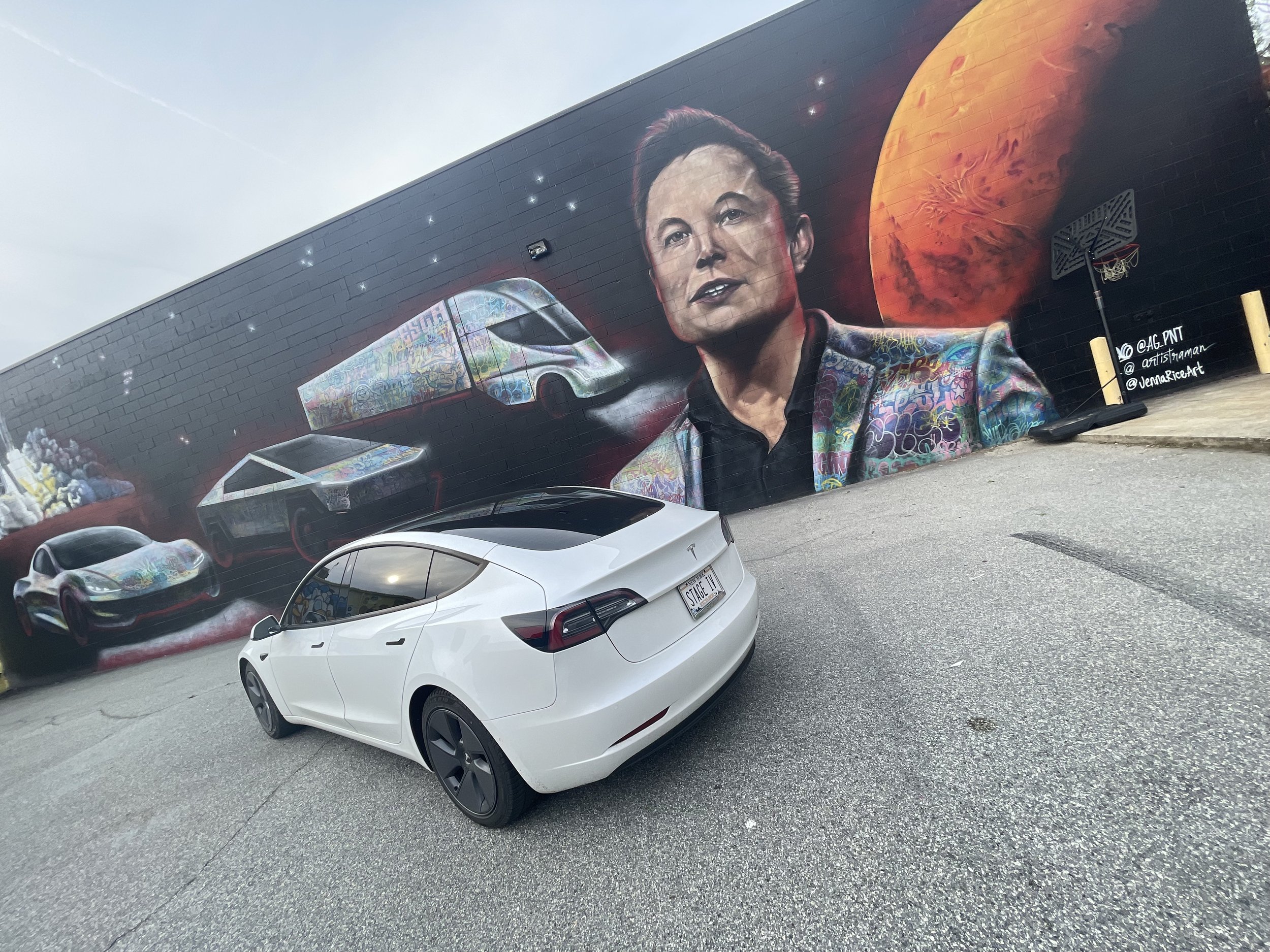
Campsite Charging
EV CHARGING AT CAMPSITES?
Campgrounds with RV sites often come equipped with electrical hookups capable of charging a Tesla while you sleep. Imagine subsidizing the expense of your campground with the savings you’ll realize by skipping Supercharging the morning after.
Many of the state parks and federal campgrounds often preferred by Tesla road trippers come equipped with 30-amp service. These outlets will charge a Tesla at just under 3 KW, which should get you pretty close to 80% overnight.
Private campgrounds, and public campgrounds with newer electric, often feature 50-amp service. These electrical hookups are similar to those you might find in your home for appliances like stoves; newer houses often have them in garages, as well. They’re capable of charging at 10 KW, typically achieving an 80% charge in 6-8 hours.
To use 30-amp service, you’ll need to purchase an adapter known as a TT-30, sold by EVSEAdapters. This adapter has an internal circuit that monitors the plug temperature and communicates with the car to automatically set the appropriate 24 amp charging current.
To use 50-amp service, you’ll need to purchase a NEMA 14-50 Adapter. These are available on Tesla’s website. The 50-amp service is such that no adjustment of settings is necessary. [I should note that, in my travels I’ve found that 50-amp service tends to be far more reliable.]
Many Tesla road trippers purchase and carry Tesla’s Mobile Connector, as well. This will allow the vehicle to be plugged into a standard Nema 5-15 outlet - the quintessential ‘wall socket’. This charges the vehicle at a much slower rate - often 5-6 miles added per hour - and likely won’t have you fully-charged by morning. Those parked at a campsite for a few days will find themselves eventually reaching 80%, and it may be the only option for charging should you find yourself out of range of EV charging options at some point during your journey.
Note that Tesla’s Mobile Connector currently offers the NEMA 14-50 Adapter as well as the NEMA 5-15 adapter (wall plug) and a 20-foot cable.
SOME TIPS BASED ON MY EXPERIENCES…
Some campgrounds have old, antiquated electrical boxes - we’re talking equipment from the 70s and 80s. Plugging in, and staying plugged in, can be a challenge here - plugs fall out of sockets, electric box doors push plugs loose… it can be a nightmare.
At the suggestion of EV campers who came before me, I carry a selection of bungee cords and a roll of duct tape in my box of camping supplies. They’ve come in handy more than once.
At many campsites, 20 feet is adequate for the charging cable - you can generally angle the vehicle in a way that allows for less than 20 feet from charge port to outlet.
At some campsites, however, the electrical box is far enough away from the area you’ll park your Tesla in that you’ll wind up leaving your charging cable hanging in mid-air, or even find that charging impossible without the use of an extension cord.
While you can technically use an extension cord to charge a Tesla, it's generally not recommended due to overheating and potential for fire, which could cause damage to the charger, the electrical outlet, or the vehicle itself. Regular extension cords just aren’t designed for the continuous, high-ampere loads required for EV charging. It's best to use a heavy-duty extension cord designed for EV charging if you require a distance longer than 20 feet, and always ensure it's rated for the amperage and voltage requirements of your charger. Some 50-foot, 50-amp cables equipped with the Tesla adapter are available from third-party sellers online, but they can be pricey.
I’ve arranged to charge my vehicle at a different, vacant campsite before moving it back to my designated site; this may be an option, as well. Just in case, I recommend knowing where your closest EV charging options are in advance of your stay at any campground. I use the PlugShare app to search for different kinds of EV chargers, especially in more remote areas.
For best results, look for photos of your campground online - some sites even allow you to view pictures of the sites themselves, which may give you a clearer picture of the charging distance during the site reservation process.
Kampgrounds of America, or KOA, has a statement concerning EV camping on their website:
“Keeping the outdoors clean is a priority for KOA and we are excited to be part of this future-forward vision. As such, we are adding EV charging infrastructure at many of our locations throughout North America to support our guests’ ever-changing needs. Currently, however, a small portion of our campgrounds are set up with EV charging capabilities. It is essential to understand that EVs require constant electricity flow to charge their batteries, and the majority of our campgrounds’ electrical pedestals do not have this capability. Our current electrical pedestals were originally designed for non-continuous loads typical of today’s RV usage, and therefore simply cannot support EV charging. Plugging your EV into a traditional 50-30 amp campground pedestal could permanently damage your vehicleas well as the campground’s electrical system. If a charging converter was provided by your auto manufacturer, it does not change the way electricity flows within the campground’s electrical infrastructure and should not be used to connect your EV to our campground pedestals.”
It goes on to provide a list of 28 (as of 4/25) properties that do provide charging at campsites.
I’ll note that I have stayed at other KOA properties that allow charging at sites, despite not being included in the listing on the KOA website.
That said, I do find that some private campsites tend to have a higher rate of seasonal campers to transients, and seasonal campers - those who reserve a site for the season, often year after year - tend to have more of the comforts of home at their campsite - including plugged in electrical appliances drawing heavily on the electrical infrastructure of the campground.
In Erie, PA I met a woman who proudly showed me her ‘ice cream freezer’. In addition to a full refrigerator bigger than my refrigerator at home, she had a separate freezer just for ice cream for the grandchildren.
In Georgia, I met a gentleman with a motor coach he said sold for more than one million dollars. It had separate air conditioning units in each section of the coach - including one for the driver, one for the ‘sitting room’, one for the dining area, and one for the master bedroom. All four were running - in January. “We like to be comfortable, and it doesn’t cost me anything extra,” he told me.
In Jacksonville, FL I met a family who had so many things plugged in that they had taken to using the pedastal of a neighboring site with an extension cord - one that I was assigned for the night. They were quite upset that they had to give up whatever was plugged in to that site for a few hours, and turned every single light on the side of their trailer on to try to floodlight me out. (Fortunately I travel with blackout shades… I slept like a baby and woke up to the lights having timed out at some point overnight).
The point is, campgrounds that play summer home to seasonal campers often have quite a thirst for electricity. This includes most KOA properties. Campgrounds run by the National Parks Service, state parks, and municipal parks tend to eschew ‘seasonal’ campers - most have 14-day limits on reservations, in fact. Campers who are “just passing through” often bring less in the way of electrical appliances and air conditioning. For Tesla camping and EV camping, then, I try to avoid the private campgrounds and head for those run by the government.

Unplug and just… go!
EPIC EV ROAD TRIPS
I took my Tesla Model 3 SR+ - the base model, with its EPA-estimated 263 miles of range - thousands of miles, from New York State to the furthest point south we could go: Key West. I watched Outer Banks in the Outer Banks, enjoyed seeing ships cruise past on the banks of the St. John’s River, and navigated my way along the shores of several of the Great Lakes, and many of the Finger Lakes.
These cars are amazing for road trips - and with the expansion of charging networks throughout the US and Canada, they’re just getting better.
Below I’ve compiled a list of some of the EV road trips I’ve taken. I’ll be adding to this over time, and hope to incorporate the experiences of other EV road trippers and Tesla campers in the future.
BLUE RIDGE PARKWAY
The Blue Ridge Parkway, a National Parkway and All-American Road, is America's longest linear park, running for 469 miles through 29 Virginia and North Carolina counties. It links Shenandoah National Park, with its Skyline Drive, to Great Smoky Mountains National Park. The parkway has been the most visited unit of the National Park System every year since 1946 except four. As such, it bills itself “America’s Favorite Road.” It was designated one of America’s Scenic Byways in 1996 (NC) and 2005 (VA).
I visited in 2022. Read about my trip here. Read about the Blue Ridge Parkway here; visit their official NPS website here.
OUTER BANKS SCENIC BYWAY
The Outer Banks Scenic Byway, which includes two ferries, 21 coastal villages, and miles of breathtaking scenery in every direction, extends for 138 driving miles and 25 ferry-traveling miles, and effectively crosses across several islands which includes Cedar Island, Ocracoke Island and Hatteras Island. The route also crosses two inlets as well as 21 distinct coastal villages along the way.
I visited in January 2022, sleeping on the beach at the Cape Hatteras National Seashore. Read about my trip here. Read more about the Outer Banks Scenic Byway here.
THE OVERSEAS HIGHWAY
The Overseas Highway is a 113-mile (181.9 km) scenic route across a system of open ocean bridges connecting the numerous tropical islands of the Florida Keys. It carries US Route 1 all the way to Key West. Large parts of it were built on the former right-of-way of the Overseas Railroad, the Key West Extension of the Florida East Coast Railway; completed in 1912, the Overseas Railroad was heavily damaged and partially destroyed in the 1935 Labor Day hurricane. The Florida East Coast Railway was financially unable to rebuild the destroyed sections, so the roadbed and remaining bridges were sold to the state of Florida. It was named a National Scenic Byway in 2009.
I visited in January 2022, swimming at Bahia Honda State Park and sleeping at the southernmost campground in the USA. Read about my trip here. Read more about the Florida Keys here.
TAIL OF THE DRAGON
Deals Gap is a popular and internationally-famous destination for motorcycle and sports car enthusiasts set along a stretch of two-lane road known since 1981 as the ‘Tail of the Dragon’. This 11-mile (18 km) stretch of road is said to have 318 curves. Some of the sharpest ones have names like Copperhead Corner, Hog Pen Bend, Shade Tree Corner, Mud Corner, Gravity Cavity, Beginner's End, and Brake or Bust Bend. The speed limit on the Dragon was 55 mph (89 km/h) before 1992; it was reduced to 30 mph (48 km/h) in 2005.
I visited in April 2022, driving the full length and back. Photographers from several companies camp out along the route each day, snapping photo and selling it to the drivers and cyclists doing the drive. You can see some of my photos, and read more about my drive, here. Read more about the Tail of the Dragon here.

The Stage IV Tour
WHAT’S THE STAGE IV TOUR?
In 2021 my brother gifted me a Tesla Model 3 SR+. He felt that my vehicle at the time, a 2005 Toyota Prius, wasn’t dependable enough to make frequent trips back and forth to the cancer center an hour away; he also believed that I might want to spend some time traveling, and since we were in the height of the pandemic, figured an ‘EV road trip’ might be a good way to do it. I’ll admit that I was skeptical, at first. Would I run out of charge? A friend and I took an introductory-level trip to the Great Lakes to start out. From that point on, I was hooked.
Since then I’ve taken road trips through 17 states and Washington DC, spending more than month cumulatively sleeping in 16 campgrounds:
National Park Service campgrounds on the Cape Hatteras National Seashore in the Outer Banks of North Carolina, and in Shenandoah National Park, aka Skyline Drive, in Virginia.
An Army Corps of Engineers campground in North Carolina.
A US Forest Service campground in the Francis Marion and Sumpter National Forests in South Carolina.
Private campgrounds in the Jefferson National Forest and the Tennessee Valley Authority’s Fontana Dam, both in North Carolina.
State park campgrounds in Michigan, New York*, North Carolina, Ohio, Pennsylvania, South Carolina, and Virginia.
An ‘Island Authority’ campground in Jekyll Island, Georgia.
Municipal campgrounds in Jacksonville, Orlando, and St. Petersburg, Florida, and Fairfax County, Virginia.
Numerous private campgrounds throughout the Blue Ridge Mountains, the Outer Banks, the Florida Keys, Presque Isle State Park (PA), and other places.
I’ve also boondocked in a Walmart parking lot - after more than $6,000 in damage, I won’t make that mistake again - and spent the night sleeping in ‘camp mode’ on roadways and rest stops. I’ve stayed at hotels equipped with Tesla and EV chargers, and once even stayed in a nursing home!
My first EV road trips were at the height of the pandemic in early 2022, when solo travel was all the rage - we were social distancing, after all! My most recent one is a weekend staycation at a nearby state park we’re calling Two Teslas at Taughkannock. In between, I’ve traveled through 18 states, sleeping in my little ‘sleeping pod on wheels’ in half of them.
Bucket list items include traveling on a ferry, sleeping on an island, and taking the Amtrak Autotrain. I’d also like to head further west, where there are so many things I want to see. Driving on the Utah Salt Flats? Historic Route 66? Touring the factory where my car was made? And exploring my own state: camping in the Finger Lakes, hiking in the Adurondacks, and sleeping on the water in the Great Lakes. There’s so much to see and do in this amazing country of ours… and you know I’ve gotta do a little drive into Canada and Mexico, too, to say we’ve gone international.
The Overseas Highway, Florida Keys - January 2022
The Blue Ridge Parkway - April 2022
The Overseas Highway, Florida Keys - January 2022
Skyline Drive, Shenandoah National Park - April 2022
The Overseas Highway, Florida Keys - January 2022

The Blue Ridge Parkway - April 2022


